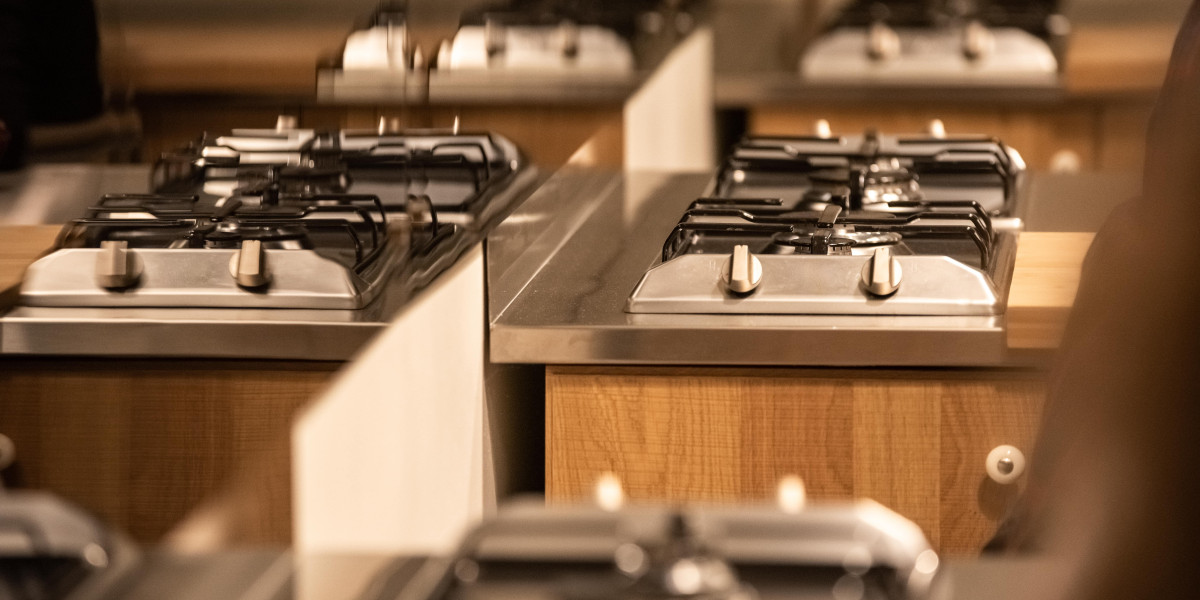The Benefits and Design Considerations of a Kitchen with a Built-In Oven
In contemporary kitchen style, built-in ovens have actually become a popular function, offering both performance and looks that deal with modern-day way of lives. This article looks into the benefits of integrating a built-in oven into the kitchen space and highlights vital design considerations to make sure a cohesive and useful kitchen environment.
Understanding Built-In Ovens
Built-in ovens & Hobs are developed to be flawlessly integrated into kitchen cabinets, which separates them from conventional freestanding ovens. These appliances can be found in various configurations, consisting of single-wall ovens, double-wall ovens, and even microwave ovens that share the very same integrated cabinet space.
Common Types of Built-In Ovens
| Type | Description | Perfect Use |
|---|---|---|
| Single Wall Oven | A standard oven with one compartment for baking and roasting. | Small kitchens or everyday baking. |
| Double Wall Oven | 2 different oven compartments permitting for synchronised cooking. | Large families or regular bakers. |
| Combination Oven | A microwave and traditional oven in one unit. | Quick meals and flexible cooking choices. |
| Steam Oven | An oven developed specifically for steam cooking. | Health-focused cooking and complex dishes. |
Advantages of Built-In Ovens
The popularity of built-in ovens can be attributed to a number of crucial advantages, including:
1. Space Efficiency
Built-in ovens are developed to fit within existing cabinets, maximizing important floor space. This feature is particularly helpful in smaller cooking areas, where every square foot counts.

2. Streamlined Appearance
The smooth integration of a built-in oven produces a sleek look in the kitchen. Available in different finishes, built-in ovens can match or match cabinets, using a contemporary and unified style visual.
3. Enhanced Functionality
Built-in ovens often provide sophisticated functions, such as smart technology, numerous cooking modes, and even self-cleaning choices. This can enhance cooking experiences and improve the efficiency of meal preparation.
4. Improved Accessibility
With correct installation of a built-in oven, users can increase availability, avoiding the requirement to flex over to reach a lower oven compartment. Eye-level cooking appliances permit cooks to monitor their dishes quickly and minimize the danger of burns from flexing down to look at a baking product.
5. Energy Efficiency
Numerous contemporary built-in ovens utilize sophisticated cooking innovation that can result in lower energy usage. Features like convection cooking can minimize cooking times while guaranteeing even heating, eventually conserving energy.
Design Considerations for a Kitchen with Built-In Ovens
While built-in ovens offer numerous advantages, mindful factor to consider in the design phase is necessary to maximize their advantages and integrate them effectively into the kitchen layout. Here are some essential factors to think about:
1. Cabinet Configuration
When planning for a built-in oven, property owners must carefully consider cabinet layouts and configurations. Adequate ventilation is crucial for appropriate operation. It's vital to leave adequate area for airflow, which can vary depending upon the oven design.
2. Height Preference
The setup height of the oven must be figured out based on the main users. A built-in oven situated at eye level can make it easier to utilize, specifically for those who often cook.
3. Complementary Appliances
In a kitchen setting, built-in ovens often complement other built-in appliances such as microwave and warming drawers. Choosing appliances that work well together can even more enhance the kitchen's style.
4. Visual Choices
Selecting surfaces and colors that harmonize with the total kitchen style is essential. Built-in ovens are offered in different options, consisting of stainless-steel, black, and even customized cabinet finishes that can disappear perfectly into the kitchen cabinetry.
5. Spending plan Considerations
Built-in ovens can range considerably in rate, from affordable alternatives to high-end models packed with features. It's vital to set a reasonable budget plan that enables the wanted specifications without jeopardizing the general kitchen restoration.
Frequently asked questions
1. What is the distinction in between a built-in oven and a freestanding oven?
Built-in ovens are integrated into kitchen cabinetry and supply a seamless appearance, while freestanding ovens are standalone systems that can be moved easily.
2. Do built-in ovens need professional setup?
Yes, built-in ovens normally need professional setup due to their integration with cabinetry and electrical requirements.
3. Are built-in ovens more costly than conventional ovens?
In basic, built-in ovens can be more expensive due to their installation process and advanced functions, however there are many options readily available to fit varying spending plans.
4. How do I preserve a built-in oven?
Routine cleansing and upkeep, such as utilizing the self-clean function, examining seals, and making sure proper ventilation, are vital for preserving a built-in oven.
5. Can built-in ovens be used in smaller cooking areas?
Yes, built-in ovens can be advantageous in smaller cooking areas since they take full advantage of space efficiency and can be set up at eye level for convenience.
Incorporating a built-in oven into a kitchen design is an exceptional option for improving functionality and aesthetic appeals. By considering the style pointers and advantages talked about in this post, homeowners can create an unified kitchen area that accommodates their cooking needs while looking stylish and elegant. Whether remodeling an existing kitchen or developing a brand-new one, built-in ovens provide a level of elegance and functionality that aligns flawlessly with modern cooking practices.


